PHOTOS: Architect loses his sight, but not his will to design
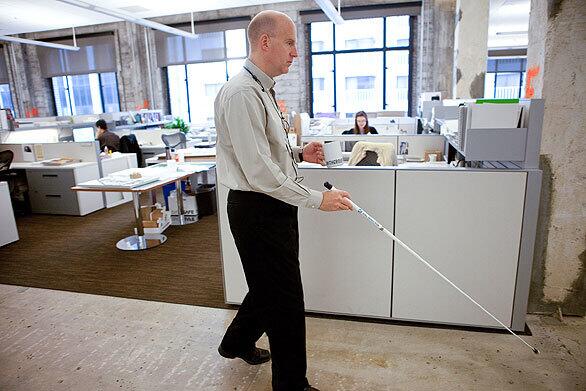
Christopher Downey of Piedmont, Calif., who lost his sight to a brain tumor, navigates his office in San Francisco. He was an architect before going blind, and he remains one today. He’s now working on the sprawling Polytrauma & Blind Rehabilitation Center, scheduled to open in three or four years in Palo Alto. (Robert Durell / For The Times)
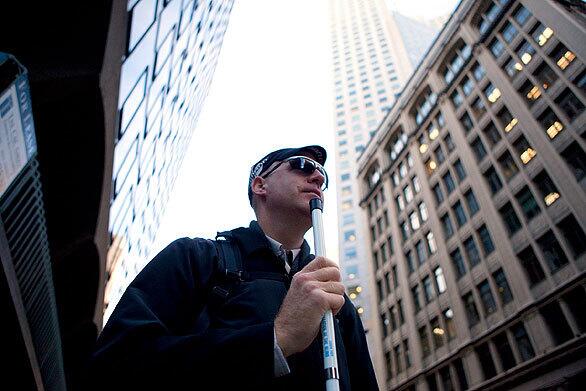
Downey makes his way through San Francisco’s financial district on his way to work. The questions that engage him and other blind architects are deeply serious: What makes a building beautiful if you can’t see it, and how can you create beautiful structures if you’re blind? (Robert Durell / For The Times)
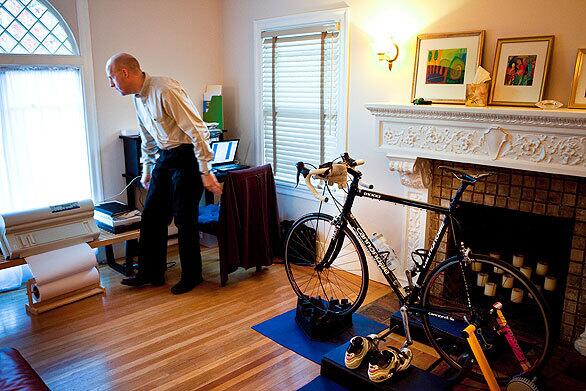
Downey in his living room in Piedmont, Calif. By February 2009, he had been blind for nearly a year and had spent more than half of that time trying to find someone like himself, anywhere in the world. He met blind software engineers, writers and professionals who teach computer skills to others who have lost their sight. (Robert Durell / For The Times)
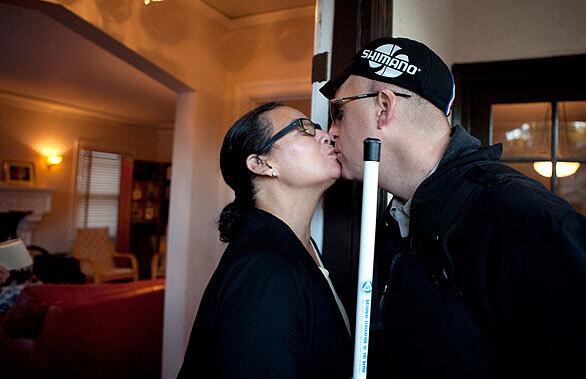
Downey kisses his wife, Rosa, as he leaves for work. He learned to use software that reads text on his computer screen aloud. He got a cellphone that reads him his e-mails and uses GPS to give audible walking instructions. (Robert Durell / For The Times)
Advertisement
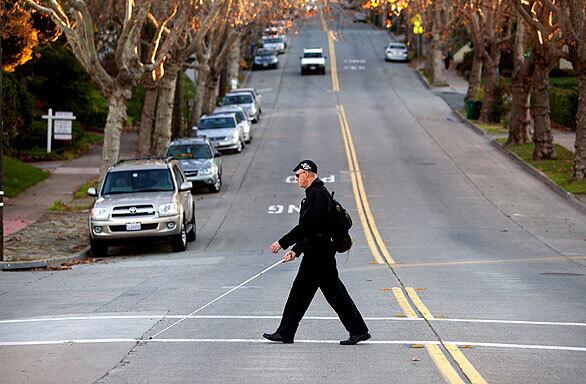
Downey crosses a residential street in Piedmont, where he’ll catch a bus that will take him into San Francisco. He returned to his new job on a limited basis just a month after brain surgery, but he struggled to balance work and rehabilitation. At the same time, the economy was collapsing. He was laid off, and the firm eventually closed. So it seemed more important than ever for Downey to talk to someone who had mastered what he calls the “heroically visual” field of architecture without the most basic tool of all: eyesight. (Robert Durell / For The Times)
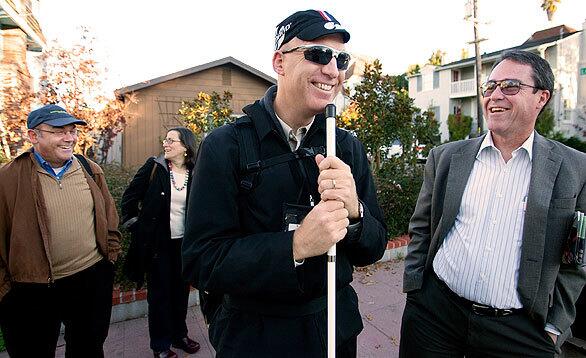
Downey shares a light moment with fellow commuters at his Piedmont bus stop. When he awoke from his surgery, the world had gone black. “That was a tough day, realizing that [blindness] is the new deal,” he said. “I’ve always been the outdoors type, loved sunlight, would run around and open up all the curtains in the house and let the sun in .... So first, oh, my gosh, no more sun.” (Robert Durell / For The Times)
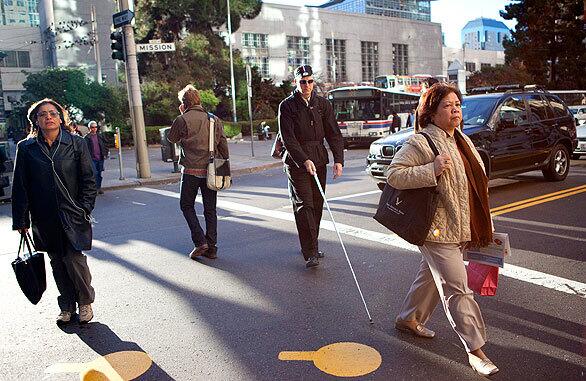
Downey in San Francisco’s financial district. “Leaving the profession has never crossed my mind,” Downey wrote to a blind architect in Portugal, somebody he’d never met, “but I must admit that it is requiring a lot of effort, training and research to try to figure out how to approach what is inevitably thought of and practiced as a very visual profession.” (Robert Durell / For The Times)
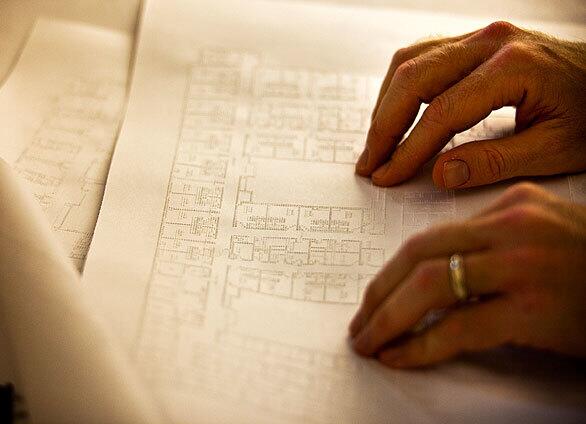
Using his fingers, Downey examines an architectural drawing for the blind at his San Francisco office. His first thought after losing his vision was about “the life lesson for my son: taking it seriously and dealing. I don’t have any control over what happened, but I do have a lot of control over where we go from here.” (Robert Durell / For The Times)
Advertisement
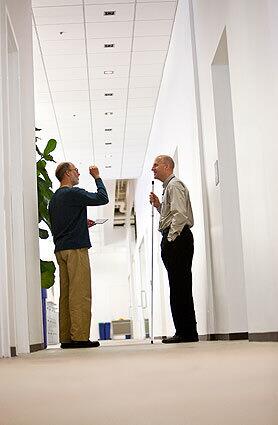
Downey, right, chats with a colleague. All he ever wanted to be was an architect -- and his blindness hasn’t changed that. (Robert Durell / For The Times)







